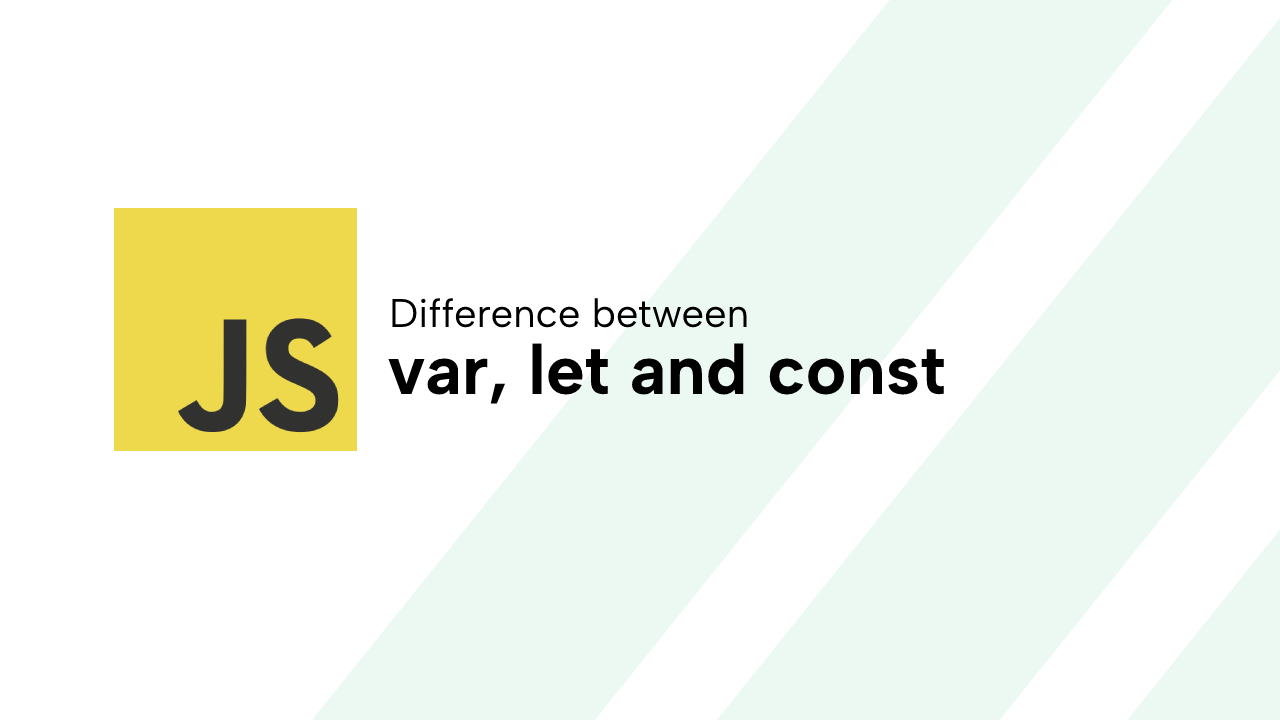Differences between let, const, and var in JavaScript

JavaScript (JS) is a popular programming language that is used to create dynamic and interactive web pages. One of the fundamental concepts in JS is the concept of scope. Scope defines the accessibility of variables within a program. In this blog, we will discuss the difference between var, let, and const keywords in terms of scope in JavaScript.
Scope in JavaScript
Scope defines the accessibility of variables within a program. There are three types of scope in JavaScript:
1. Global scope :
Variables declared outside of a function have global scope, which means they can be accessed from anywhere in the code. Here is two examples of global scope in JavaScript:
var x = 10;function example1(y) { console.log(y); // Output: 10}function example2() { console.log(x); // Output: 10 example1(x);}example2();console.log(x); // Output: 10In this example, the variable x is declared outside the function example(), which makes it a global variable. It can be accessed from within the function, nested function as well as outside the function, as shown in the console.log() statements.
function example() { x = 10; // This creates a global variable console.log(x); // Output: 10}example();console.log(x); // Output: 10One thing to note is that if a variable is declared within a function or block without using the var, let, or const keyword, it becomes a global variable. This can lead to unintended consequences and should be avoided.
2. Local scope :
Variables declared inside a function have local scope, which means they can only be accessed within that function. Here is an example of local scope in JavaScript:
function example() { let x = 10; console.log(x); // Output: 10}example();console.log(x); // Throws an error: Uncaught ReferenceError: x is not definedIn this example, the variable x is declared within the function example(). This makes it a local variable, which can only be accessed from within the function. If we try to access it from outside the function, it will result in a ReferenceError because the variable is not defined in the global scope.
3. Block scope :
Block scoping means declaring a variable, not just inside a function, but around any curly brackets like if statements or loops. Here is an example of block scope in JavaScript:
function example() { let x = 10; if (true) { let x = 20; console.log(x); //Output: 20 } console.log(x); // Output: 10}example();In this example, the variable x is declared with the let keyword inside the function example(). It can be accessed within the function and any nested blocks. However, if we declare x again within a nested block, it will only be accessible within that block.
Variables in Javascript
1. var keyword :
The var keyword was the only way to declare variables in JavaScript prior to the release of ES6. Variables declared with var have function-level scope, which means they are accessible within the function in which they are declared, and any nested functions. Here is an example:
function example() { var x = 10; console.log(x);}example(); // Output: 10console.log(x); // Output: Uncaught ReferenceError: x is not definedIn this example, the variable x is declared with var inside the function example(). It can be accessed within the function and any nested functions. However, if we try to access x outside of the function, we get an error because x does not exist outside the function's scope.
2. let keyword :
The let keyword was introduced in ES6 as an alternative to var. Variables declared with let have block-level scope, which means they are accessible within the block in which they are declared, and any nested blocks. Here is an example:
function example() { let x = 10; if (true) { let x = 20; console.log(x); //Output: 20 } console.log(x); // Output: 10}example();In this example, the variable x is declared with let inside the function example(). It can be accessed within the function and any nested blocks. However, if we declare x again within a nested block, it will only be accessible within that block.
3. const keyword :
The const keyword was also introduced in ES6. Variables declared with const have block-level scope, like let. However, unlike let, const variables cannot be reassigned once they are declared. Here is an example:
function example() { const x = 10; x = 20; // Output: Uncaught TypeError:Assignment to constant variable.}example();In this example, the variable x is declared with const inside the function example(). If we try to reassign x, we get an error because x is a constant and cannot be changed once it is declared.
Conclusion
Understanding scope is a fundamental concept in JavaScript . var has function-level scope and can be reassigned. let and const have block-level scope, with let being able to be reassigned and const being a constant variable that cannot be reassigned. When choosing between var, let, and const, it is important to consider the scope and whether the variable needs to be reassigned.